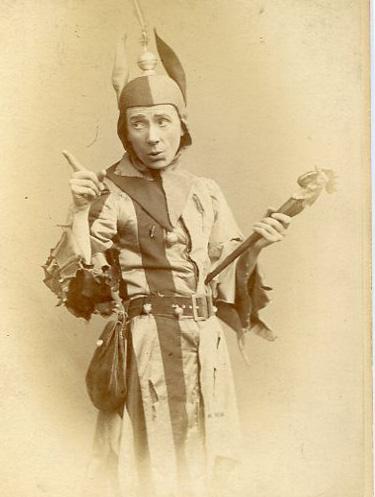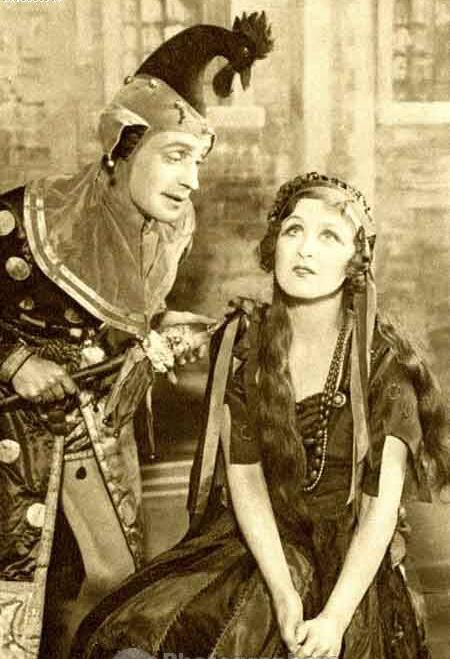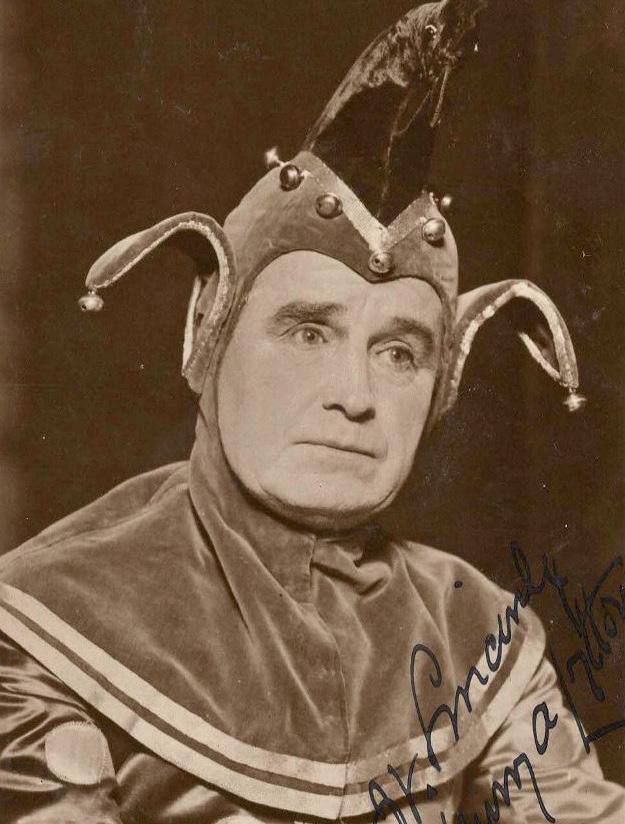
The Yeomen of the Guard, or, The Merryman and His Maid, was the eleventh collaboration of William S. Gilbert and Arthur Sullivan. It opened on October 3, 1888, at the Savoy Theatre in London, running for 423 performances. The setting is the Tower of London in the 16th Century during the reign of Henry VIII. The Lamplighters’ current production, our twelfth, uses costumes designed and built in 1986 under the supervision of the late John Gilkerson. These place the action a full century later in the reign of King Charles I.
STRANGE ADVENTURE: AN ALTOGETHER DIFFERENT OPERETTA
From its premier, audiences have recognized that there is something distinctly different about Yeomen. Undeniably, it boasts a score which many consider the best of Sullivan’s works, but it is the more serious book that distinguishes it from all other G&S operettas. Yeomen alone presents a strangely delicate balance of comedy and sadness, tending even to tragedy.
The plot turns on Colonel Fairfax, under sentence of death at the Tower of London, wrongfully charged with sorcery by a villainous cousin who stands to inherit a fortune if Fairfax dies unmarried. In order to foil this plan, the condemned man, with the aid of the Tower Lieutenant, has undertaken a scheme to marry any willing maiden in return for payment.

A pair of wandering performers appear––unemployed jester Jack Point, and his companion Elsie Maynard, a singer with whom Point is hopelessly in love. The two are in serious want of money and the Lieutenant selects Elsie as Fairfax’s bride. Convinced of the prisoner’s imminent execution, Elsie reluctantly agrees, and she and Fairfax are blindfolded for the ceremony. She expects to be a well-endowed widow within the hour. As they say, “complications ensue.” With the help of his friend, Sergeant Meryll of the Yeomen of the Guard, and his daughter Phoebe––herself in love with Fairfax––the Colonel escapes by disguising himself as Meryll’s son Leonard, and throws the Tower into utter confusion and the astonished Elsie and Point into despair. When Fairfax––still in disguise––discovers the identity of his bride, he woos her openly. Thinking herself married to another, Elsie at first rejects this “Leonard”. But after a false announcement that Fairfax has been shot dead she succumbs to his courting. Point is left alone, bereft and broken-hearted.
YEOMEN AND THE LAMPLIGHTERS

The Lamplighters’ first production of Yeomen took place in 1962, at San Francisco’s Harding Theater. It had taken a full decade for the Company to bring Yeomen to the stage: “Finally there we were,” said late Lamplighter icon Gilbert Russak, “really honest-to-god doing Yeomen of the Guard, a big show in our big theatre. At [the Lamplighters’ former home on] McAllister Street it would have been Yeomen in a Shoebox.” The show was a tremendous success. General Manager Spencer Beman recalled that Russak’s legendary performance as Jack Point would regularly “reduce audience and cast alike to tears… We used to bring up the house lights very slowly so tears could be furtively wiped away.”
THE ORIGINS OF GILBERT’S PLOT
The run of Ruddygore was disappointing and, as ticket sales began to decline, D’Oyly Carte asked for a new work. As had happened in the past, Sullivan rejected Gilbert’s magic lozenge plot, and pleaded for a work with a story line that might provide some degree of realism. Gilbert was stumped until, while waiting at a railway station one night, his eye lighted upon an advertisement for “Tower Furnishing Company.” This depicted the Tower of London with a “Beefeater” in the foreground, clad in the resplendent uniform. This

image as a setting for a new opera flashed before his eyes. He would use the Tower of London as the background for a more realistic human story, with some of his characteristic comedy and humor leavening an overall more serious mood.
Both Gilbert and Sullivan found the creation of The Yeomen of the Guard difficult. Gilbert took five full months to write the book. Even the title gave the duo some difficulty. Originally intended to be called The Tower of London, Gilbert changed it first to The Tower Warders, and then The Beefeaters, before finally settling on The Yeomen of the Guard after Sullivan objected that “Beefeater” was an ugly word.
Two known sources for Gilbert’s plot were a once-popular English opera entitled Maritana, written by William Vincent Wallace and first performed in 1845; and Harrison Ainsworth’s 1840 novel The Tower of London Maritana, set in 16th Century Spain, has a complicated plot involving a beautiful gitana (gypsy girl) who earns her living as an itinerant street entertainer, with whom the King falls in love. Meanwhile, a gallant gentleman is sentenced to death for engaging in a duel to protect an innocent young boy. In order to lessen his own sentence, he agrees to marry the first maiden who comes along––of course, Maritana. At the end, Maritana and her secret husband are united, and the King disappointed. The novel The Tower of London features a bumbling jailer who vainly courts a maid and twice has his jail cell keys stolen, resulting in prisoners escaping and shots being fired. It seems clear that Gilbert knitted together elements of Maritana and the Ainsworth novel to structure an outline of the Yeomen plot, replacing the role of the King with the hapless jester Point; and making this character, entirely his own creation, the key to the story. It is this role that provides the critical element making Yeomen different from––and far superior to––these other long-forgotten sources.

For his part, once he had Gilbert’s libretto before him, Sullivan found the composition of the music presented entirely new challenges from those to which he had theretofore been accustomed. In particular, Sullivan was completely stumped by I have a song to sing, O! The rhythm and pattern of verses lengthening with each repetition like those of the nursery rhyme The House that Jack Built was highly unusual and unlike anything he had ever set before. Sullivan turned to Gilbert himself to ask what he had intended when writing it. As recorded by G&S patterman and historian Martyn Green, when Sullivan asked Gilbert what he had in mind for the song, Gilbert said that he had been inspired by a sea chantey he had heard some sailors singing, the tune and form of which had haunted him, and which he had in mind when writing the lyrics. Gilbert may have hummed or whistled a portion of this for Sullivan, who got the idea, and quickly sketched a tune to fit the words. In Martyn Green’s words: “So who did write it? It’s hard to say, but without Gilbert, Sullivan would never have put this particular melody down on paper.”

CRITICAL AND POPULAR RECEPTION
Although Yeomen was successful, it is apparent from the earliest reviews that it took some time for audiences to get used to its style. Even the reviewers seemed puzzled. The London Times declared “the author and to some extent the composer have, in familiar phrase, turned over a new leaf.” Whether it was because Gilbert had grown beyond his “very original but not very profound humour,” or “the comparatively small success” of Ruddygore proved that “the public required a change,” it was “certain” that “The Yeomen of the Guard differs from its numerous predecessors in many important respects.” In place of Gilbert’s familiar topsy-turvy satire, “we have a serious plot of a romantic kind carried on in lively but rational dialogue of the Elizabethan pattern,” with even patterman George Grossmith performing the role of Jack Point “as the most serious of the dramatis personae.” The “resemblance” to Maritana was “obvious,” and, identifying it as more an “English opera” than an operetta, the reviewer remarked that he might have been “inclined to suspect some subtle attempt at parody” had not the “serious tone” of Yeomen precluded such a conclusion.


As for the public’s reaction, the reviewer noted, “[t]he effect on last night’s very friendly audience was an interesting psychological study.” There were many occasions where the audience seemed to expect that one character or another would “do or say something outrageously comic,” or that the situation would turn in some other farcical direction. “When neither turned out to be the case the spectators were evidently a little doubtful whether to take everything au sérieux or to titter in advance at some joke which sometimes failed to come.” It “was almost a relief” to be on “familiar ground” again as soon as Grossmith reappeared to give some “downright fun.”
As was the norm, the Times gave Sullivan more credit: “Whatever may be thought of the new piece, it has undoubtedly the merit of having given an excellent chance to the composer... Sir Arthur’s score is fully equal to previous achievements and the success of the piece will no doubt be largely due to it.”
From a modern perspective, it is interesting to note that the reviewer never mentioned the completely unprecedented finale, or how Point’s collapse raised the fundamental question of whether it had been a comedy at all. What the reviewer could not know was that the actor portraying the key role was actually misrepresenting the intentions of the author. As Martyn Green explains: “Gilbert’s directions are ‘Point falls insensible...’ It is on record that, after hearing that Henry Lytton was playing it on tour as a death scene, Gilbert replied: ‘It’s just what I want. Point should die, and the end of the opera should be tragedy.’ His direction ‘falls insensible’ was for the sake of Grossmith, who was really incapable of serious acting. According to the late J.M. Gordon, as the curtain was coming down, Grossmith would waggle his toes and wink at the audience.” In light of this, it is not quite so surprising that the reviewer failed to note the tragic tone of the entire piece.

When Yeomen was revived in subsequent years, fresh audiences and reviewers reflected a greater understanding and appreciation for the work. Thus, the Times reviewer of the May 1897 revival stated “[a]s it was no doubt advisable to revive one of the former operas of the Gilbert-and-Sullivan series... there can be no doubt that the choice of The Yeomen of the Guard … was a very wise one, for some of the very qualities which were least appreciated at the time of its production nearly nine years ago are now found to be of practical utility.” Key to this new appreciation was the change in acting personnel. In this regard, the reviewer specifically noted that “the undeniably gloomy character of the central action, upon which the powers of the older generation of Savoy comedians seemed almost wasted, now suits the company well enough.”
THE YEOMEN OF THE GUARD: TRAGEDY OR COMEDY?
So, what is Yeomen? Is it a romantic comedy? A mature love story with unforeseen complications and plot twists veering into near disaster but coming out well in the end for the lovers? Or is it a tragedy, complete with a flawed tragic hero brought low by fickle circumstance, all-too-human error, and a duplicitous antagonist? Martyn Green came down firmly: “It is tragedy. Neither Gilbert nor anyone else connected with the piece ever called it a ‘comic’ opera. It is billed, and always has been billed, as ‘an entirely new and original opera.’”
But because Point fails to win the girl of his dreams and at the end, “falls insensible,” does this really mean the entire work is a tragedy? For almost its entirety, Yeomen presents comic situations, or potentially tragic ones that are resolved to amusing and even hilarious effect. Fairfax is facing an unjust death, but is saved to find out he is happily married. On the other hand, Fairfax and Elsie are the only characters for whom the final denouement is unreservedly happy. The other two couples joined by the end of the show are both unions in which one member has been unwillingly forced by circumstances. Thus, the question of tragedy versus comedy is not as cut and dried as Martyn Green might have it. Like life, it is, in the final analysis, a tragi-comedy, or a comedy with tragic overtones.
There is precedent for this kind of drama in the “dark comedies” of Shakespeare––works such as The Merchant of Venice, Much Ado About Nothing, and even Twelfth Night––where sadness and pain lurk just beneath the surface. As in those classic plays, Gilbert sets forth his view that in life, all cannot end well for everyone. Fairfax did not set out to ruin anyone’s life. When he woos Elsie away from Point, he knows he is already married to her. He cannot reveal this fact to

anyone because he is an escaped prisoner. In the final analysis, Point has already given Elsie in marriage to the man who subsequently bests him in the competition of love. By the strict classical definitions of the genres, the situation is comic, even if it is tragic for one character.
Point is flawed in a way that foils his chance for achieving what he wants - it is simply that he is nothing more than ordinary. He is not a great comedian, or even a particularly good jester. He is melancholy and somewhat bitter. And he loses the girl he adores mainly because he consents to her marrying someone else. And for what? Nothing more noble than money. He is simply all too human, and all too commonplace in his humanity.


Fairfax is also a deeply flawed character. His flaws are seen in the way he flirts outrageously with Phoebe in the first act finale, leading her on even though he knows he is married; and again when he pretends to woo Elsie on behalf of Point when he is wooing her for himself. Above all, in the second act finale, he plays what amounts to a cruel practical joke on Elsie by emerging arrogantly in the middle of her wedding festivities to announce that she must forget all about the man she is about to marry because she is already married to himself. He then insensitively allows her to grieve her loss bitterly without lifting a finger to correct the false impression he just created, i.e. that he is not the same person as the Leonard Meryll she believes she is about to marry.
There may be no better summation of Gilbert’s intentions in writing Yeomen than Point’s own unforgettable monologue near the beginning of Act II. In response to Shadbolt’s remark that he has “cause to be merry” because of his new job as the Lieutenant’s household jester, Point replies:
Cause? Have we not all cause? Is not the world a big butt of humour, into which all who will may drive a gimlet? See, I am a salaried wit; and is there aught in nature more ridiculous? A poor, dull, heart-broken man, who must needs be merry, or he will be whipped; who must rejoice, lest he starve; who must jest you, jibe you, quip you, crank you, wrack you, riddle you, from hour to hour, from day to day, from year to year, lest he dwindle, perish, starve, pine, and die! Why, when there’s naught else to laugh at, I laugh at myself till I ache for it!

Point’s tragedy is that while he is fully aware of the absurdity of all mankind and of life itself––at which absurdity it is his chosen profession to make others laugh––he is simultaneously painfully aware of his own humanity, weaknesses, disappointments, ridiculousness, and failures. Above all else, he is all too conscious of his failure to secure the love of the one person whom he loves and needs. Despite this heartbreak, he is required to go on making others laugh. It is this tension that lies at the center of the Yeomen conundrum. Yes, it is a comedy. But it is a comedy that is imposed upon an underlying tragic condition.
Like his own creation Jack Point, Gilbert had a jaundiced view of the world and humankind. He was “a salaried wit”, who earned his daily bread by recording the foibles and peculiarities of his fellow humans for the amusement of others. Gilbert undoubtedly identified with Jack Point more intimately than with any of the other characters he ever created. And that identification makes Yeomen uniquely great. The Yeomen of the Guard is a distinctly different work from the rest of the G&S canon precisely because of its complexity, depth, and profoundly satisfying beauty. This beauty is not just skin deep. More than any other of the collaborations, it rewards repeated viewing and repeated encounters by dedicated actors and directors. Both musically and dramatically, it is far and away the greatest of all the Savoy operas, a true masterpiece without peer.

- Rick Williams, Lamplighters Artistic Director, 2013 - 2017

